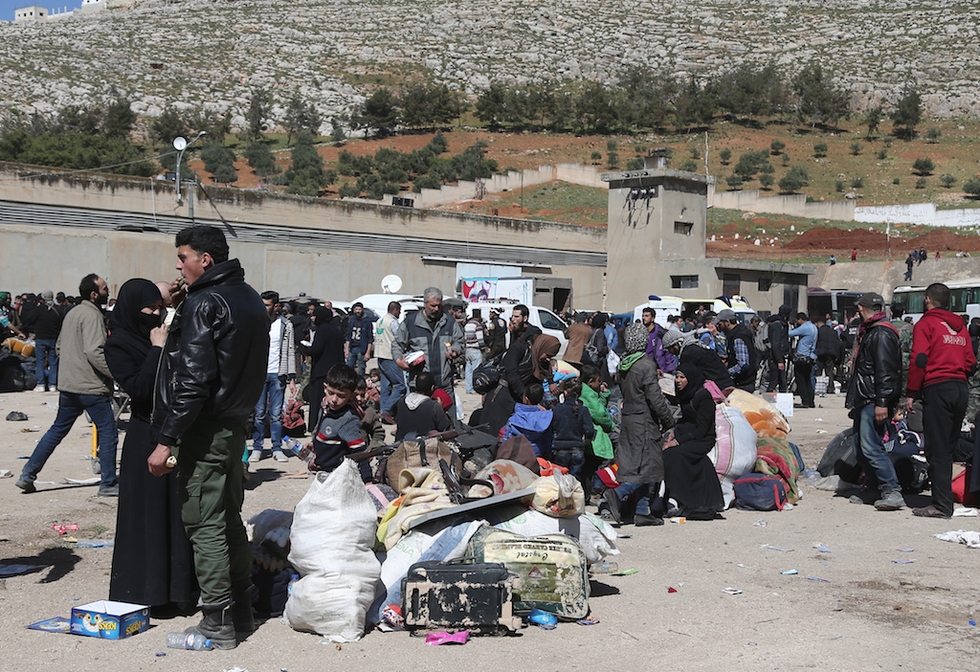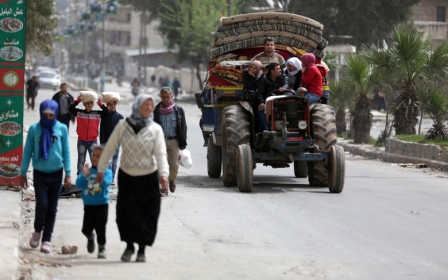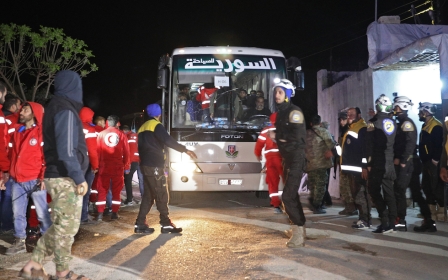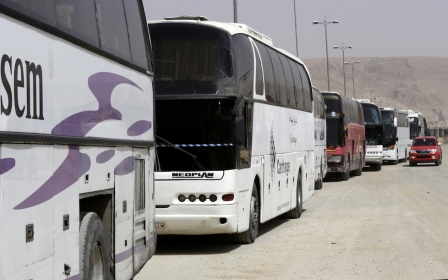Biggest convoy yet leaves rebel pocket of Syria's Ghouta

Almost 7,000 people departed Eastern Ghouta for Syrian rebel-held territory near the Turkish border on Tuesday, the Syrian Observatory for Human Rights said, under an agreement arranged by Russia to surrender the enclave to the Syrian government.
The Observatory said the convoy left in the early hours of Tuesday towards northern Syria. The evacuees included rebel fighters, their families, and other civilians, it said.
State media also reported the largest convoy yet of evacuated Syrian rebel fighters and civilians began leaving a devastated pocket of Eastern Ghouta overnight.
One hundred buses carrying 6,749 people - around a quarter of them fighters - left a part of the enclave controlled by the Faylaq al-Rahman rebel faction, the Sana state news agency said.
The departure was part of a deal reached last week between the Islamist group and Russia, which is helping its Syrian ally negotiate such deals to clear the last rebels out of Ghouta.
Russian-backed Syrian troops and allied militia have waged a brutal offensive since 18 February in which they have recaptured more than 90 percent of Ghouta, a onetime rebel bastion on the edge of Damascus.
Moscow has negotiated two evacuation deals so far for Ghouta.
One, implemented last week, saw hardline Islamist rebels from Ahrar al-Sham leave the battered town of Harasta in the west of the enclave.
The agreement with Faylaq al-Rahman was announced on Friday and its implementation started the following morning.
Nearly 1,000 people - including rebels, their relatives and other civilians - were evacuated on Saturday, followed by 5,435 people on Sunday.
President Bashar al-Assad has used such agreements to recover swathes of territory since the uprising against him began seven years ago this month.
Middle East Eye propose une couverture et une analyse indépendantes et incomparables du Moyen-Orient, de l’Afrique du Nord et d’autres régions du monde. Pour en savoir plus sur la reprise de ce contenu et les frais qui s’appliquent, veuillez remplir ce formulaire [en anglais]. Pour en savoir plus sur MEE, cliquez ici [en anglais].




